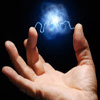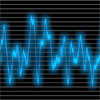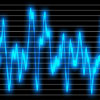Interesting Facts About Vibration, Sound, And Music
“Music has charms to soothe the savage breast; To soften rocks, or bend a knotted oak.” – William Congreve, English dramatist (1637–1708)
Everything is vibrational energy – each atom – a nucleus surrounded by electrons, revolve at the speed of 600 miles per second.
Motion creates frequency and frequency creates sound.
Whether we hear it or not, everything has a sound, a vibration all it’s own.
Sound waves are everywhere.
Resonance is the frequency at which an object most naturally vibrates.
If you have two tuning forks made to vibrate at 440 hertz (cycles per second) and strike one of them, the other one will spontaneously vibrate or sing along also.
This sympathetic vibration is a natural ability and our bodies vibrate to frequencies imposed from another source.
We are vibrational energy with our own vibrational frequency.
We live in a state of vibration from which sound derives and on which sound has profound influences.
When you are around someone with a vibrational rate similar to your own, you feel comfortable and familiar – “good vibes”. When you are around someone’s energy field that is totally different from yours, you instinctively feel that too – “bad vibes”.
The ear has been referred to as “the Rome of the body” because all cranial nerves lead there.
The 10th cranial nerve is the vagus (wondering or vagabond) nerve because it communicates to the rest of the body. This means that sound we here actually is resonating our entire body.
Soldiers, whose combined rhythmic marching matched the natural frequency of a footbridge in Manchester, England, in 1831, and caused it to fall apart – the principle of resonance in action.
Pancreatic and kidney stones are dissolved with acoustic waves – another use of the resonance principle – two things vibrating at the same rate.
Healthy cells resonate; unhealthy cells don’t.
Sound – vibration – is the lead character in all creation myths. All cultures and religions speak of sound as the divine principle.
The ancient Chinese dynasties understood the power within music to be a free energy, which man could use or misuse according to his own free will. So only the “correct” music could be played.
Ancient civilizations based their societies on their knowledge that music could influence a person’s thoughts, emotions, health, and actions. A young person’s training included listening to specific types of music depending on the occupation they were to fulfill as adults.
Music is a chain of vibration: all atomic matter vibrates – frequency is the speed at which matter vibrates – the frequency of vibration creates sound (sometimes inaudible) – sounds can be molded into music
Music can help generate the body’s automatic relaxation response – releasing endorphins that help us relax.
Listening to a favorite piece of music that makes you happy will tend to enhance the production of endorphins which contribute to feelings of wellness.
Beta-endorphins associated with “runner’s high” are also released when listening to pleasurable music.
Music designed as “entertainment” is too fast for the body to get into a relaxed state. This includes most pop and rock music as well as some classical music.
Music with 60-70 beats per minute allows the body to relax. Music of this tempo most closely matches a resting heart rate.
The body entrains itself to the rhythms of music. The rate of brain waves, breathing, or heart rate, temporarily matches the pulse of the music we listen to.
We respond faster to sound than to sight or touch.
Fast, rhythmic music can spur the body’s fight or flight response.
If the brain doesn’t resonate with a rhythm, neither will the breath or heart rate.
Rhythm affects the body in two ways: internal-to-internal – our pulse systems naturally synchronize with each other. The heart rate entrains, or locks in, with the breath rate; external-to-internal – our brain waves can be entrained to musical rhythms. Alter one pulse with music (such as brain waves), and the other major pulses (heart and breath) will follow.
In other words, Music alters our nervous system.
Rhythms of breath and blood flow provide the womb sounds with which a mother and unborn child bond and the baby forms.
The ear is the first fully functioning sensory organ in the fetus; it begins charging the brain – thereby growing the brain – by week eighteen in utero.
We not only hear with our ears, we hear through bone conduction as well – meaning, we hear with the whole body.
The conscious use of rhythm can alter major body pulses, allowing us to be in states most conducive to specific activities. Rhythm is a noninvasive way to wind up or lay back. If you feel out of sync, rhythm can help you find your center and begin again.
Hearing is the last sense to shut down when we die.
– Source: The Power of Sound, Joshua Leeds & various internet sources
Posted in Science For The New Agewith 1 comment.







HI
I like your page and am very interested in frequency. I have been pondering about resonate frequency and the fact that a wine glass (a container) partly filled with water, will resonant when you rub your finger on the rim. I was wondering if you have come across anything about the human body (a container, if you will) being 60% water, would somehow resonate like the wine glass, being vibrated (“rubbed”) by music or some external source and is this vibration good or bad? I know this is a kind of out there question but I think we are just touching the surface of the power of frequency.